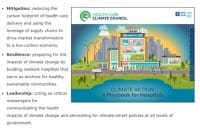Honoring our veterans is an essential part of our society as they have shown dedication and bravery while serving our country. It’s our responsibility to provide them with veteran-centered care, which can enhance their quality of life. Veterans face many challenges after leaving active duty, which affect their personality and health.
Simply asking about a veteran’s service can provide validation. PsychArmor’s 15 Things Veterans Want You to Know course can help healthcare providers become more culturally competent.
- Not all veterans are soldiers. The U.S. military has five branches: Army, Navy, Air Force, Marines, and Coast Guard. Each has its own purpose, jobs, rankings, and uniforms. Only army personnel are soldiers.
- Reserves are part of the military—all branches have reserves. Part-time soldiers with civilian jobs train once a month and 2 weeks per year, are always ready to serve when called, and face unique challenges.
- Not everyone in the military is infantry. In 2023, there were 1.3 million active-duty military personnel and 750,000 reserve military personnel in the United States. Their jobs range from communications to cooks, doctors, mechanics, and musicians, and they receive specialty training that can last from months to years.
- The military has leaders at every level in the chain of command. Every branch of a business has a unique ranking structure with different types of leadership. Veterans prioritize taking responsibility and accountability for others, putting others first.
- The military is always on duty, ready 24/7. They can be called back to duty anytime, even on leave. This can cause disruptions in family plans.
- Appearance and conduct are essential. Military members must be physically fit and ready at all times. They’re held to a high standard of conduct, including how they should appear in uniform. They’re accountable by law and can be convicted for disobeying.
- Not all killed someone—and those that did don’t want to talk about it. This is a question that should never be asked.
- Not all have PTSD—combat can be traumatic, and so can being away from their loved ones.Most veterans who experienced a traumatic event have recovered and are doing well. Individuals respond differently. Providers should ask veterans about the best and worst days of their military experience.
- Invisible wounds do not make a veteran dangerous. PTSD, traumatic brain injury, depression, and substance use disorders are actual injuries. They’re not a mental illness or a psychiatric condition. They deserve to be treated the same as visible wounds. Veterans with invisible wounds aren’t prone to become dangerous or violent.
- It takes a lot of work to ask for help. Military personnel are encouraged to be independent and put others first. They were trained to be emotionally and physically perfect.
- Military service changed them—the change is permanent and needs to be accepted. As with all experiences, we adapt and change, and military service is no different.
- They differ in how much they identify with the military after they leave active duty. Military experience varies from person to person and day to day. Military experiences changed them.
- Their families served with them. Military families often experience separation from loved ones, making it difficult to establish roots and relationships. They have to be adaptable and flexible, and families take on additional responsibilities while their loved ones are away. When veterans return home, they sometimes feel a sense of displacement.
- They would die for each other and their country. Thank them for their dedication to freedom.
- They all sacrificed for one reason: To serve something more important than themselves—their country. They are honored and committed. They define our culture. Some were drafted. Some enlisted. They all served for us.
Military service has a direct correlation with the illnesses and symptoms that veterans face at the end of their lives. Evidence indicates that exposure to environmental and chemical hazards during service has caused various health issues, such as cancer, lung diseases, and neurological disorders. A veteran’s health is affected by the time and place they served.
The lack of treatment options led to mental illness, paraplegia, lung problems, blindness, and amputations among World War I veterans due to the absence of research on medications in the early 1900s.
World War II lasted from 1941 to 1945, with veterans today being over 90 years old. Antibiotics were discovered in the mid-1930s, saving many lives. Veterans faced harsh weather conditions and unique health risks, including exposure to mustard gas, infectious diseases, frostbite, radiation, and nuclear chemicals.
The Korean War, from 1950 to 1953, was extremely cold. As many veterans age, they develop complications from the cold weather, such as diabetes and peripheral vascular disease. Unique health risks includeperipheral neuropathy, skin cancer, arthritis, ambulation disturbances, and nocturnal pain.
Veterans serving during the Vietnam War from 1962 to 1975 are 60 to 80 years old today. The growing list of unique health risks include PTSD, depression, substance use, hepatitis C, reactions to Agent Orange, and skin diseases from poor hygiene and herbicides. The Vietnam War was viewed as a failure because the military didn’t accomplish its goal. Veterans weren’t welcomed back formally to the United States, causing an increase in mental health illnesses.
The Persian Gulf War was a brief military operation that began in 1990 and ended in 1991. Although one of the shorter conflicts, many people were exposed to toxic agents and smoke, and they experienced long-term side effects from preventive medications and immunizations. Unique health risks include chronic fatigue, muscle and joint pain, fibromyalgia, forgetfulness, headaches, rashes, asthma, depleted uranium, and amyotrophic lateral sclerosis.
Operation Enduring Freedom and Operation Iraqi Freedom took place in Afghanistan and Iraq, respectively. Veterans who served in these operations encountered numerous health risks, such as exposure to contaminated water and air pollution and infectious diseases. Many also experienced mental health issues. They faced unique risks such as cold injuries, high altitude illnesses, vision loss, and exposure to depleted uranium.
It is important that we acknowledge the sacrifices that our veterans have made for our country. We need to strive to provide them with the best care and support possible, and that includes understanding their unique experiences and challenges. By being culturally competent and respectful, we can improve the lives of our veterans and show them the gratitude they deserve for their service. Let’s honor our veterans by giving them the care and support they need, and by remembering their sacrifices.
Angie Meyer is a home health and hospice clinical manager at Gundersen Palmer Lutheran Hospitals & Clinics in West Union, Iowa.
References
National Hospice and Palliative Care Organization. We Honor Veterans: Service-related diseases, illness & conditions. wehonorveterans.org/resource-library/service-related-diseases-illness-conditions
PsychArmor Institute. 15 things veterans want you to know. va.gov/HEALTHPARTNERSHIPS/docs/PsychArmor_15ThingsCourseNotes.pdf


















